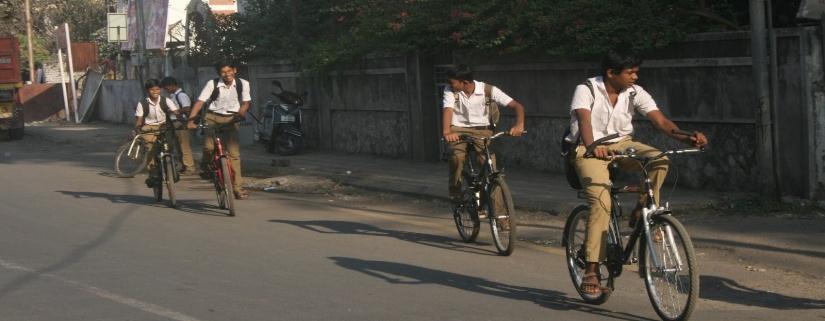
2 minute read
Table 4: Highlights of School-based Learning about Sustainable Transportation
2. As cycling is no longer a part of the daily routine for most children and parents have safety concerns, it may be reasonable to assume that lesser and lesser children are learning to cycle. 3. A little less than half the schools have not formed a School Transport Committee, which could potentially be the committee to enhance cycle safety and promotion with schools
4. Schools don’t necessarily have covered cycle parking or basic cycle repair kits
Advertisement
5. Schools would like to have: Improved cycle infrastructure Coaching for cycle riding for children Cycle repair kit for the school Awareness sessions for children about the benefits of cycling Cycle Day events; cycles available at reduced cost or access to free cycles; awards for cyclists Counselling for parents and students to prevent underage motorized two-wheeler riding, and strict enforcement from Traffic Police on this
Learning About Sustainable Transportation
The methods used to understand the current situation of what students are being taught about traffic and transportation issues included: Curriculum and textbook analysis Meetings with Traffic Police who manage Road Safety Patrol programme in about 60 schools Meetings with a few NGOs in Pune who have been advocating sustainable mobility and have conducted structured programmes with schools.
The detailed reports of these analysis and meetings are presented in Appendix 10 and Appendix 11.
Table 4: Highlights of School-based Learning about Sustainable Transportation
1. Learning how to cycle is the most effective way for children to be interested in cycling; children should be provided opportunities to learn cycling, including competitive cycling. 2. It is appropriate to help children learn about sustainable transportation 3. However, it may not be appropriate to ask children to cycle in traffic till safety provisions for cyclists are improved
4. Textbooks do have content related to road safety, transportation modes, pollution etc.
However, there are gaps and taken as a whole, the content throughout school does not provide a holistic understanding of the topic of sustainable transportation. 5. Schools do provide opportunities for co-curricular learning such as through action projects 6. The domain of schools and mobility deserves attention to accelerate efforts for sustainable mobility. Sustainable transportation efforts in schools may focus on learners as responsible citizens as well as the school itself to be a site for demonstrating sustainable practices. 7. A 'whole school, whole system’ approach may be adopted, that includes school managements, parents’ associations, transportation service providers, the PMC road department and school education department, PMPML, Traffic Police, citizens groups and NGOs, transportation planners, etc. 8. The aim should be to support learners to understand the need for sustainable transportation and for them, and the school as a whole, to participate as active citizens in creating safe transportation in cities.





